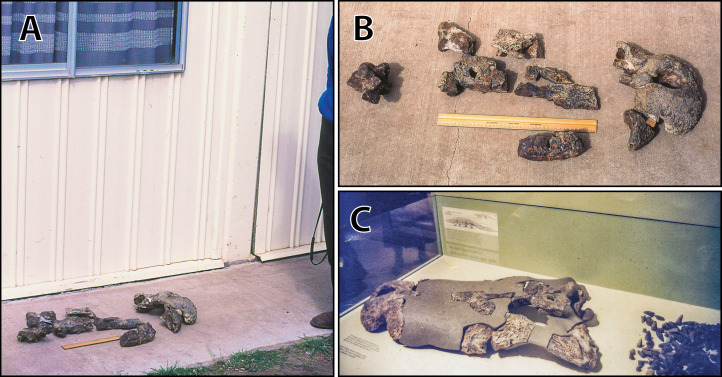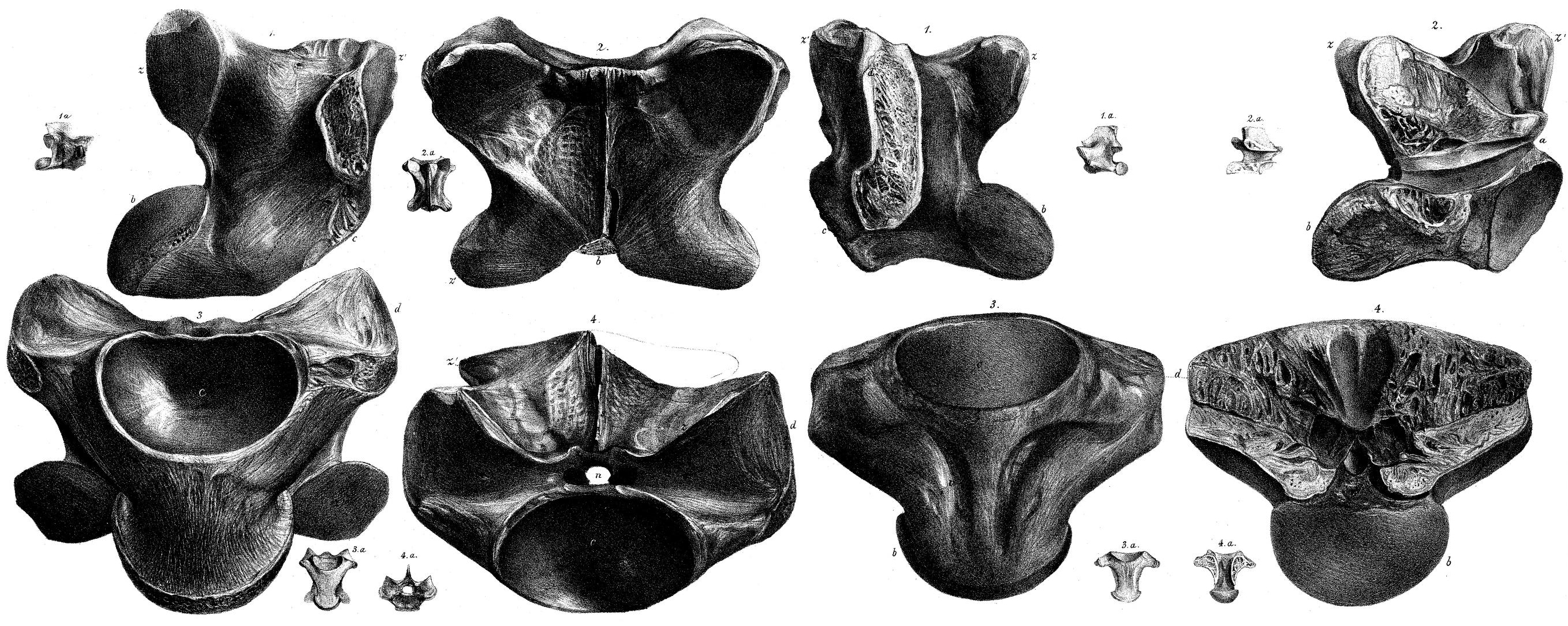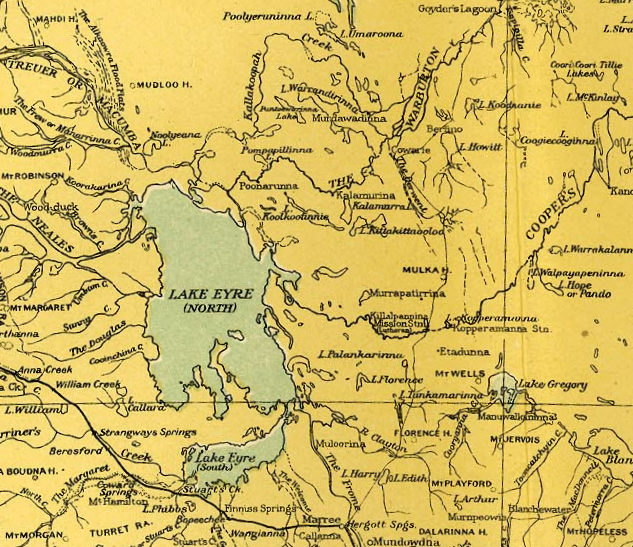|
Quinkana
''Quinkana'' is an extinct genus of mekosuchine crocodylians that lived in Australia from about 25 million to about 10,000 years ago, with the majority of fossils having been found in Queensland. Four species are currently recognized, all of which have been named between 1981 and 1997. The two best understood species are ''Q. fortirostrum'', the type species, and ''Q. timara'', a more gracile form from the Miocene. The other two species, ''Q. babarra'' and ''Q. meboldi'', from the Pliocene and Oligocene respectively, are only known from a few poorly preserved bone fragments. The name ''Quinkana'' comes from the "Quinkans", a legendary folk spirit from Gugu-Yalanji mythology. ''Quinkana'' is primarily known for its ziphodont teeth, meaning they were recurved, serrated and possessed flattened sides that gave them a blade-like shape. However, technically such teeth are only known from two species, as the basalmost form lacked serrations while the holotype of ''Quinkana fortirostrum ... [...More Info...] [...Related Items...] OR: [Wikipedia] [Google] [Baidu] |
Mekosuchinae
Mekosuchinae is an extinct clade of crocodilians from the Cenozoic of Australasia. They represented the dominant group of crocodilians in the region during most of the Cenozoic, first appearing in the fossil record in the Eocene of Australia, and surviving until the arrival of humans: the Late Pleistocene on the Australian continent and during the Holocene in the Pacific islands of Fiji, New Caledonia and Vanuatu. Mekosuchine crocodiles are a diverse group displaying a great variety of shapes and sizes. Some taxa, like ''Baru'' and ''Paludirex'', were large semi-aquatic ambush hunters, though the two genera likely differed significantly in their hunting methods. The medium-sized ''Australosuchus'' may have been relatively cold-resistant and taxa like ''Trilophosuchus'' and ''Mekosuchus'' are renowned for their small size. One of the most distinct mekosuchines was ''Quinkana'', with its altirostral (deep) skull and blade-like serrated teeth. There is some question around the lifest ... [...More Info...] [...Related Items...] OR: [Wikipedia] [Google] [Baidu] |
Megalania
Megalania (''Varanus priscus'') is an extinct species of giant monitor lizard, part of the megafaunal assemblage that inhabited Australia during the Pleistocene. It is the largest terrestrial lizard known to have existed, but the fragmentary nature of known remains make estimates highly uncertain. Recent studies suggest that most known specimens would have reached around in body length excluding the tail, while some individuals would have been significantly larger, reaching sizes around in length. Megalania is thought to have had a similar ecology to the living Komodo dragon (''Varanus komodoensis'') which may be its closest living relative. The youngest fossil remains of giant monitor lizards in Australia date to around 50,000 years ago. The first indigenous settlers of Australia might have encountered megalania, and been a factor in megalania's extinction. While originally megalania was considered to be the only member of the titular genus "''Megalania''", today it is consid ... [...More Info...] [...Related Items...] OR: [Wikipedia] [Google] [Baidu] |
Late Oligocene
The Chattian is, in the geologic timescale The geologic time scale or geological time scale (GTS) is a representation of time based on the rock record of Earth. It is a system of chronological dating that uses chronostratigraphy (the process of relating strata to time) and geochron ..., the younger of two age (geology), ages or upper of two stage (stratigraphy), stages of the Oligocene epoch (geology), Epoch/Series (stratigraphy), Series. It spans the time between . The Chattian is preceded by the Rupelian and is followed by the Aquitanian (stage), Aquitanian (the lowest stage of the Miocene). Stratigraphic definition The Chattian was introduced by Austrian palaeontologist Theodor Fuchs in 1894. Fuchs named the stage after the Chatti, a Germanic peoples, Germanic tribe.Berry, Edward W"The Mayence Basin, a Chapter of Geologic History" ''The Scientific Monthly'', Vol. 16, No. 2, February 1923. pp. 114. Retrieved March 18, 2020. The original type locality (geology), type l ... [...More Info...] [...Related Items...] OR: [Wikipedia] [Google] [Baidu] |
Charles Walter De Vis
Charles Walter de Vis (9 May 1829 – 30 April 1915) — Australian Dictionary of Biography was an England, English zoologist, ornithologist,"De Vis, Charles Walter (1829 - 1915)" — Encyclopedia of Australian science Herpetology, herpetologist,"De Vis". The Reptile Database. www.reptile-database.org. and botanist. He was born Charles Devis; he changed the spelling to De Vis about 1882. De Vis gained a BA from Magdelene College, Cambridge in 1849, became a deacon in 1852, and was rector of Breane, Somerset, from 1855 to 1859. He gave up his ecclesiastical functions to devote hi ... [...More Info...] [...Related Items...] OR: [Wikipedia] [Google] [Baidu] |
Ralph Molnar
Ralph E. Molnar is a paleontologist who had been Curator of Mammals at the Queensland Museum and more recently associated with the Museum of Northern Arizona. He is also a research associate at the Texas Natural Science Centre. He co-authored descriptions of the dinosaurs ''Muttaburrasaurus'', '' Kakuru'',Molnar, R.E. & Pledge, N.S. (1980) "A new theropod dinosaur from South Australia." ''Alcheringa'' 4:281-287 '' Minmi'' and '' Ozraptor'', as well as the mammal ''Steropodon ''Steropodon'' is a genus of prehistoric platypus-like monotreme, or Oviparity, egg-laying mammal. It contains a single species, ''Steropodon galmani'', that lived about 100.2–96.6 million years ago during the Cretaceous period, from early to m ...''. References Living people Year of birth missing (living people) Place of birth missing (living people) {{paleontologist-stub ... [...More Info...] [...Related Items...] OR: [Wikipedia] [Google] [Baidu] |
South Australia
South Australia (commonly abbreviated as SA) is a States and territories of Australia, state in the southern central part of Australia. With a total land area of , it is the fourth-largest of Australia's states and territories by area, which includes some of the most arid parts of the continent, and with 1.8 million people. It is the fifth-largest of the states and territories by population. This population is the second-most highly centralised in the nation after Western Australia, with more than 77% of South Australians living in the capital Adelaide or its environs. Other population centres in the state are relatively small; Mount Gambier, the second-largest centre, has a population of 26,878. South Australia shares borders with all the other mainland states. It is bordered to the west by Western Australia, to the north by the Northern Territory, to the north-east by Queensland, to the east by New South Wales, to the south-east by Victoria (state), Victoria, and to the s ... [...More Info...] [...Related Items...] OR: [Wikipedia] [Google] [Baidu] |
Lake Palankarinna
__NOTOC__ The Lake Ngapakaldi to Lake Palankarinna Fossil Area is a group of fossil sites located in the Australian state of South Australia within the Tirari Desert in the north-eastern part of the state's Far North region. The group has an overall area of and is located about east of Lake Eyre and about north-north-east of Marree, off the Birdsville Track near Etadunna Station. Description The area consists of four lakes grouped into two areas located about apart. They are surrounded by extensive areas of sand dunes in a flat, arid landscape. The lake beds are largely unvegetated and usually dry. Low cliffs on the western margins of the lakes have produced a variety of Tertiary vertebrate fossils ranging in age from the late Oligocene to the Pleistocene. Lakes Kununka, Ngapakaldi and Pitikanta The following three lakes are located on the west side of the gazetted locality of Mulka with Lake Ngapakaldi being partly located within the locality of Lake Eyre: * La ... [...More Info...] [...Related Items...] OR: [Wikipedia] [Google] [Baidu] |
Chinchilla, Queensland
Chinchilla is a rural town and Suburbs and localities (Australia), locality in the Western Downs Region, Queensland, Australia. Chinchilla is known as the 'Melon Capital of Australia', and plays host to a Melon Festival every second year in February. In the , the locality of Chinchilla had a population of 7,068 people. Geography The town is approximately west-northwest of Brisbane, 164 kilometres (102 mi) west-northwest of Toowoomba, 81.1 kilometres (50 mi) northwest of Dalby, Queensland, Dalby, 188 kilometres (117 mi) east of Roma, Queensland, Roma and 455.1 kilometres (283 mi) east of Charleville, Queensland, Charleville on the Warrego Highway. History Indigenous The Baruŋgam, Baranggum people lived in the region for thousands of years before British colonisation. They spoke the now extinct Barunggam language. They appear to have had kinship ties with the neighbouring Mandandanji, Bigambul and Yiman people. The name Chinchilla is a corruption of the Aboriginal word ... [...More Info...] [...Related Items...] OR: [Wikipedia] [Google] [Baidu] |
Indiana University Press
Indiana University Press, also known as IU Press, is an academic publisher founded in 1950 at Indiana University that specializes in the humanities and social sciences. Its headquarters are located in Bloomington, Indiana. IU Press publishes approximately 100 new books annually, in addition to 38 academic journals, and maintains a current catalog comprising some 2,000 titles. Indiana University Press primarily publishes in the following areas: African, African American, Asian, cultural, Jewish, Holocaust, Middle Eastern studies, Russian and Eastern European, and women's and gender studies; anthropology, film studies, folklore, history, bioethics, music, paleontology, philanthropy, philosophy, and religion. IU Press undertakes extensive regional publishing under its Quarry Books imprint. History IU Press began in 1950 as part of Indiana University's post-war growth under President Herman B Wells. Bernard Perry, son of Harvard philosophy professor Ralph Barton Per ... [...More Info...] [...Related Items...] OR: [Wikipedia] [Google] [Baidu] |
Mike Archer (paleontologist)
Professor Michael Archer Member of the Order of Australia, AM, Fellow of the Australian Academy of Science, FAA, Fellow of the Royal Society of New South Wales, Dist FRSN (born 1945, Sydney, New South Wales) is an Australian paleontologist specialising in Australian vertebrates. He is a professor at the School of Biological, Earth & Environmental Sciences, University of New South Wales. His previous appointments include Director of the Australian Museum 1999–2004 and Dean of UNSW Faculty of Science, Science at the University of New South Wales 2004–2009. Education and career Archer was born in Sydney but raised in the United States and studied at Princeton University. From 1972 to 1978, he was the curator of mammals at the Queensland Museum. Since 1983, he has been involved with the exploration of the Australian Fossil Mammal Sites (Riversleigh), Riversleigh fossil site in Queensland. He is opposed to creationism and regularly engages in active debates with creationists. ... [...More Info...] [...Related Items...] OR: [Wikipedia] [Google] [Baidu] |
Sebecosuchia
Sebecosuchia (meaning "Sobek crocodiles") is an extinct group of mesoeucrocodylian crocodyliforms that includes the families Sebecidae and Baurusuchidae. The group was long thought to have first appeared in the Late Cretaceous with the baurusuchids, but '' Razanandrongobe'' pushes the origin of Sebecosuchia to the Middle Jurassic. The last surviving members of the group, the sebecids, appear to have lasted until the late Miocene or early Pliocene on the Greater Antilles. Fossils have been found primarily from South America but have also been found in Europe, North Africa, Madagascar, and the Indian subcontinent. History and phylogeny Sebecosuchia was first constructed in 1937 by George Gaylord Simpson. In 1946 the concept was again used by American paleontologist Edwin Colbert to include '' Sebecus'' and Baurusuchidae. ''Sebecus'', which had been known from South America since 1937, was an unusual crocodyliform with a deep snout and teeth that were ziphodont, or serrated and ... [...More Info...] [...Related Items...] OR: [Wikipedia] [Google] [Baidu] |
Pristichampsus
''Pristichampsus'' (from , 'saw' and , 'crocodile') is a non-diagnostic and potentially dubious extinct genus of crocodylian from France and possibly also Kazakhstan that is part of the monotypic Pristichampsidae family. As the type species, ''Pristichampsus rollinatii'', was based on insufficient material when described in 1831 and 1853, the taxonomic status of the genus is in doubt, and other species have been referred to other genera, primarily ''Boverisuchus''. History ''Pristichampsus'' was first described and named as a species of ''Crocodylus'', ''C. rollinatii'', by John Edward Gray in 1831 on the basis of remains from the Lutetian Sables du Castrais Formation of France. J. E. Gray. (1831). ''Synopsis Reptilium''. Part I. Cataphracta. Tortoises, Crocodiles, Enaliosauria. 1-85 Paul Gervais (1853) assigned this species to its own genus, creating the new combination ''Pristichampsus rollinatii''. P. Gervais. (1853). Observations regarding the fossil reptiles of France (s ... [...More Info...] [...Related Items...] OR: [Wikipedia] [Google] [Baidu] |







